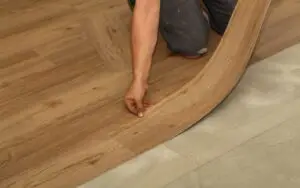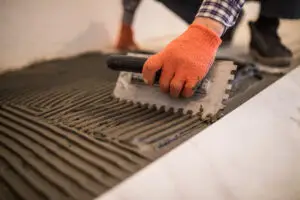Understanding the Floor Sanding Process
Floor sanding is a critical step in restoring hardwood floors, giving them a fresh, polished appearance by removing the worn-out top layer. It involves specialized tools, techniques, and a systematic approach to achieve professional-quality results.
What is Floor Sanding?
Floor sanding removes old finishes, scratches, and imperfections from hardwood floors, preparing them for a new stain or sealant. It restores the wood’s natural beauty and extends its lifespan.
Tools Needed for Floor Sanding
Sandpaper Types and Grits
- Coarse Grit (16-40): For removing old finishes and leveling uneven surfaces.
- Medium Grit (60-80): Smooths the surface after coarse sanding.
- Fine Grit (100-120): Prepares the floor for staining or sealing.
Machines for Sanding Floors
- Drum Sander: Ideal for large, open areas.
- Edge Sander: Designed for corners and edges.
- Vacuum or Dust Extractor: Minimizes dust during the process.
Can You Sand Floors Yourself?
DIY floor sanding is a tempting option for homeowners looking to save money. However, it requires time, effort, and the right skills.
Assessing Your Skills and Resources
- Do you have experience using heavy machinery?
- Are you comfortable working with wood finishes?
Comparing DIY vs Professional Costs
- DIY Costs: Tool rentals, sandpaper, and sealants.
- Professional Costs: Higher upfront cost but includes equipment, materials, and labor.
Time and Effort Required for DIY
- A typical room may take 2–3 days for a beginner, depending on its size and condition.
Challenges of DIY Floor Sanding
Sanding floors yourself comes with several potential pitfalls.
Common Mistakes in DIY Projects
Uneven Sanding and Floor Damage
Inconsistent pressure can lead to dips, waves, or scratches in the wood.
Using the Wrong Tools or Grits
Improper sandpaper choices can ruin the wood or fail to remove old finishes.
Safety Concerns in Floor Sanding
- Dust inhalation can cause respiratory issues.
- Handling powerful machinery increases the risk of accidents.
The Benefits of Professional Floor Sanding
Professionals offer advantages that DIY efforts often can’t match.
Expertise and Precision
Trained specialists ensure even sanding, preserving the integrity of the floor.
High-Quality Equipment and Materials
Professional-grade tools deliver better results and minimize dust production.
Long-Term Durability and Finish
A professional job ensures your floors look polished and last longer.
Preparing for DIY Floor Sanding
Preparation is crucial for a successful DIY sanding project.
Cleaning and Preparing the Area
Vacuum thoroughly and remove debris to prevent imperfections.
Removing Furniture and Fixtures
Clear the space entirely to allow for unobstructed sanding.
Checking for Floor Damage
Repair loose boards, nails, or gaps before starting.
Step-by-Step Guide to DIY Floor Sanding
Follow these steps to achieve the best possible results.
Choosing the Right Equipment
Rent or buy a drum sander and edge sander suitable for your floor type.
Sanding the Floor in Stages
Starting with Coarse Grits
Remove old finishes and level the floor.
Progressing to Fine Grits
Smooth the surface and prepare it for sealing.
Finishing Touches and Sealing
Apply a stain or sealant for protection and shine.
Risks of DIY Floor Sanding
DIY projects can backfire without proper knowledge and tools.
Costs of Mistakes and Repairs
Fixing errors can exceed the cost of hiring a professional.
Health Risks from Dust and Chemicals
Exposure to fine dust particles and fumes can harm your health.
Comparing Costs: DIY vs Hiring a Professional
Understanding the financial implications can help you make an informed decision.
Tool Rental and Material Costs
DIY costs include renting machines, purchasing sandpaper, and buying sealants.
Hidden Expenses of DIY Projects
Extra costs may arise from mistakes or delays.
Real-Life Examples: DIY vs Professional Results
Examining past projects can clarify what to expect.
Case Study: Successful DIY Floor Sanding
A homeowner with experience in woodworking achieved satisfactory results in a small room.
Case Study: Costs of Fixing a DIY Mistake
A misaligned sander caused permanent grooves, requiring professional repair.
DIY vs Professional Floor Sanding: Final Considerations
Weighing the pros and cons can help determine the best approach.
When DIY Makes Sense
- For small areas with minimal damage.
- If you have prior experience and access to tools.
When to Hire a Professional
- For large or complex projects.
- When precision and durability are priorities.
Achieve flawless, long-lasting hardwood floors by trusting professional floor sanding experts. Contact a specialist today to transform your space!
FAQs & Answers
DIY is cheaper upfront, but mistakes can lead to costly repairs.
You’ll need a drum sander, edge sander, sandpaper, and safety gear.
It depends on the area size, but it typically takes several days.
Yes, most hardware stores offer rental services for sanding machines.
Uneven sanding, damaging floors, and exposure to dust and chemicals are common risks.





